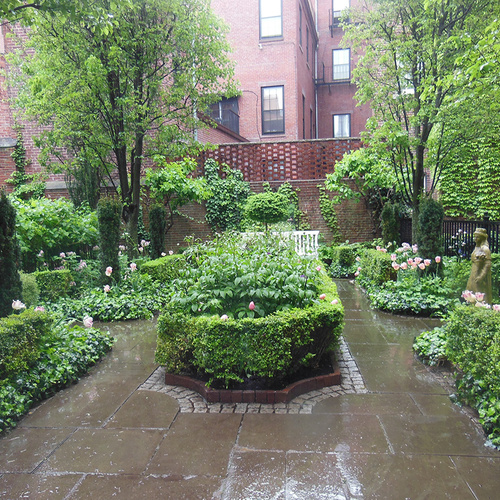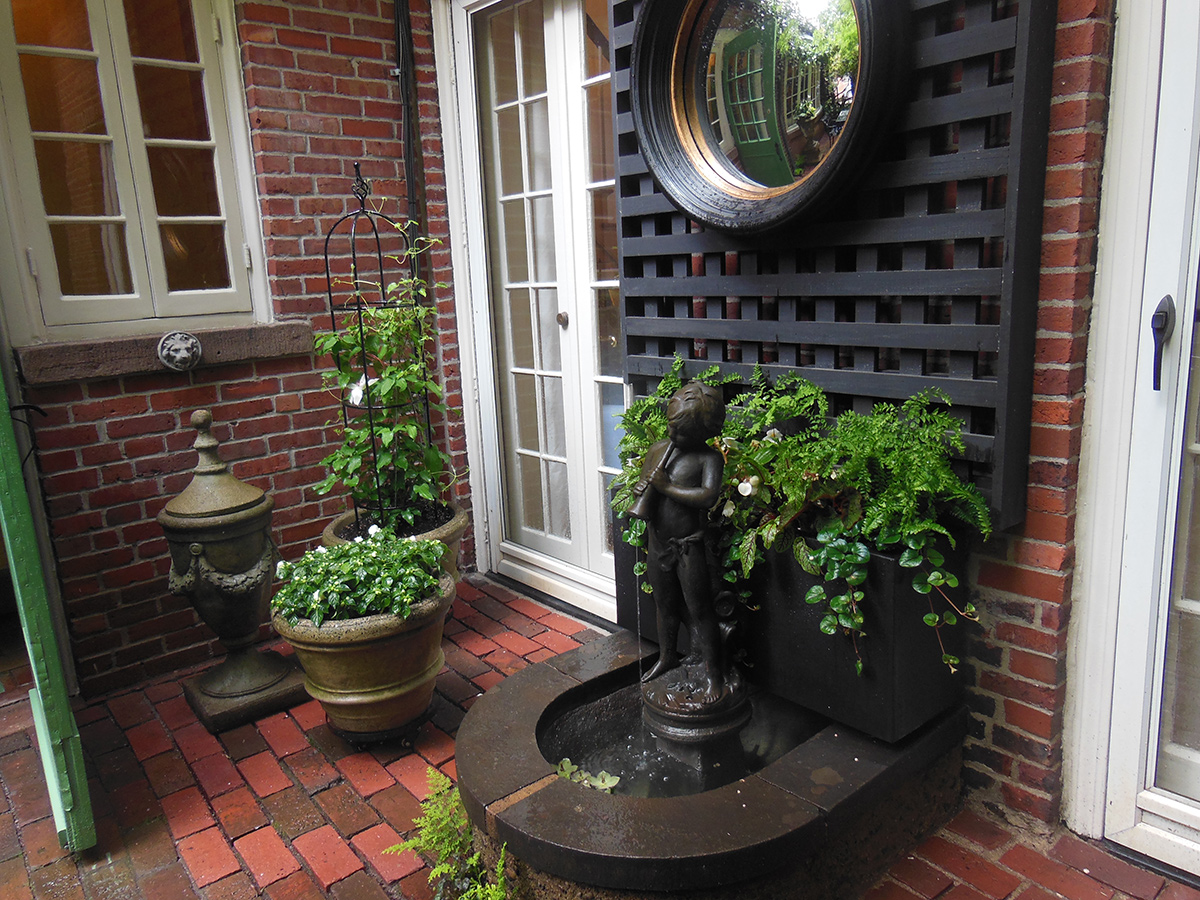Happy Monday GPODers!
We’re starting the week with a look at a historic garden tour thanks to Nancy Mellen from Massachusetts. Nancy has shared her beautiful garden in Hingham many times over the years (Spring and Summer 2024 in Nancy’s Massachusetts Garden, The Beauty of Old Roses, Fall Highlights from a New England Garden, and Blooming Through the Winter), as well as a couple incredible public gardens she has visited in her travels (Jardin du Luxembourg in August and Morikami Japanese Garden). Today she’s taking us to some sensational gardens close to home with photos from this year’s Hidden Gardens of Beacon Hill Tour. One of Boston’s oldest neighborhoods, Beacon Hill is known for it’s cobblestone streets up steep hills, Federal-style and Victorian brick row houses, and historical landmarks peppered throughout the neighborhood. However, the average tourist might not know that there are also stunning, secret gardens tucked between all of this incredible architecture.
On May 15, 2025, the Beacon Hill Garden Club of Boston, MA held its 96th annual tour of the Hidden Gardens of Beacon Hill. My husband and I have been going for several years and love it. I decided I’d share some pictures with you this year.
The first group of photos is of some of the gardens on the tour, and the second group is of the streets, entry ways to get to the back gardens, and the window boxes and pots people living in Beacon Hill decorate their homes with.
These gardens really are like hidden worlds, tucked away behind and between the incredible row houses that make up Beacon Hill. Despite the narrow streets and bustle of this active area in the city, some lucky residence have green havens to enjoy a slice of plant life.
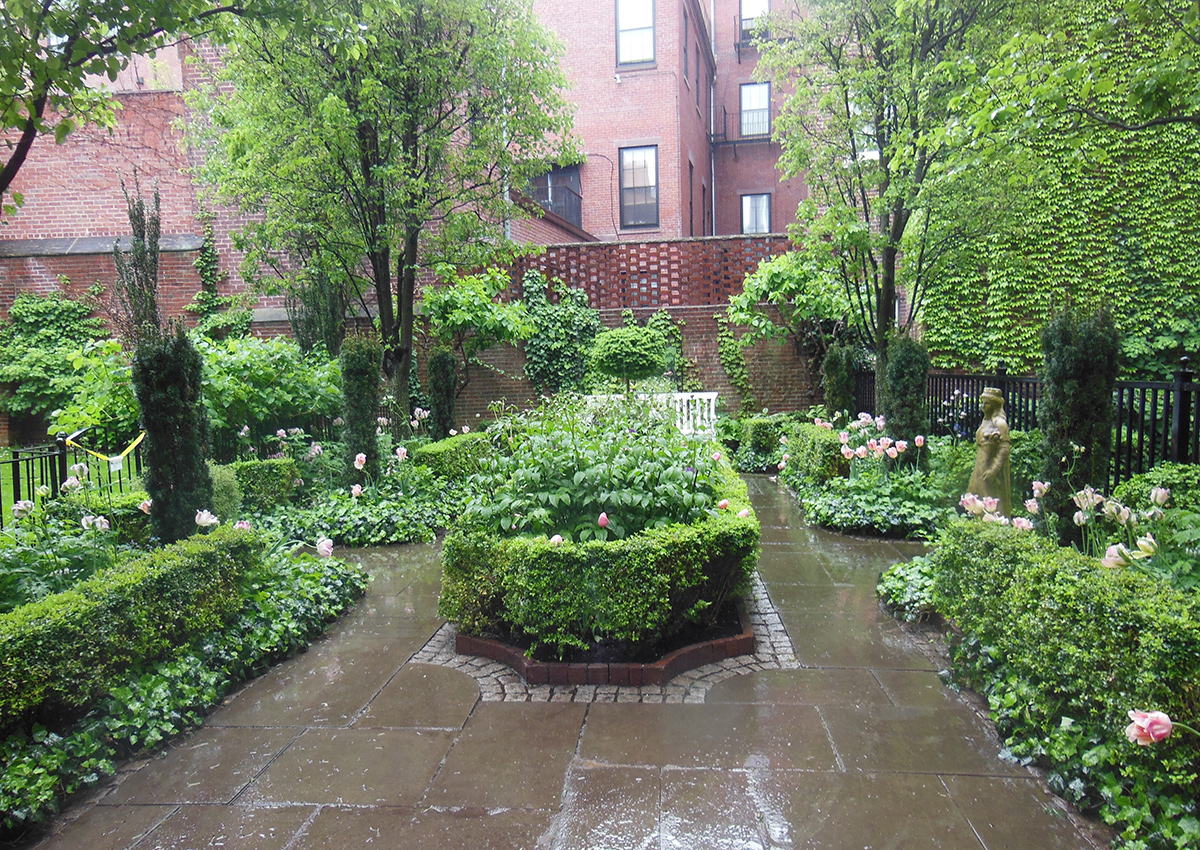 Many of the gardens focus on formal designs and classic garden elements, with lots of clean edges and green hedges. While this can sometimes feel out of place in the suburbs, the architecture of this old part of the city and the small courtyard spaces make each space feel authentic.
Many of the gardens focus on formal designs and classic garden elements, with lots of clean edges and green hedges. While this can sometimes feel out of place in the suburbs, the architecture of this old part of the city and the small courtyard spaces make each space feel authentic.
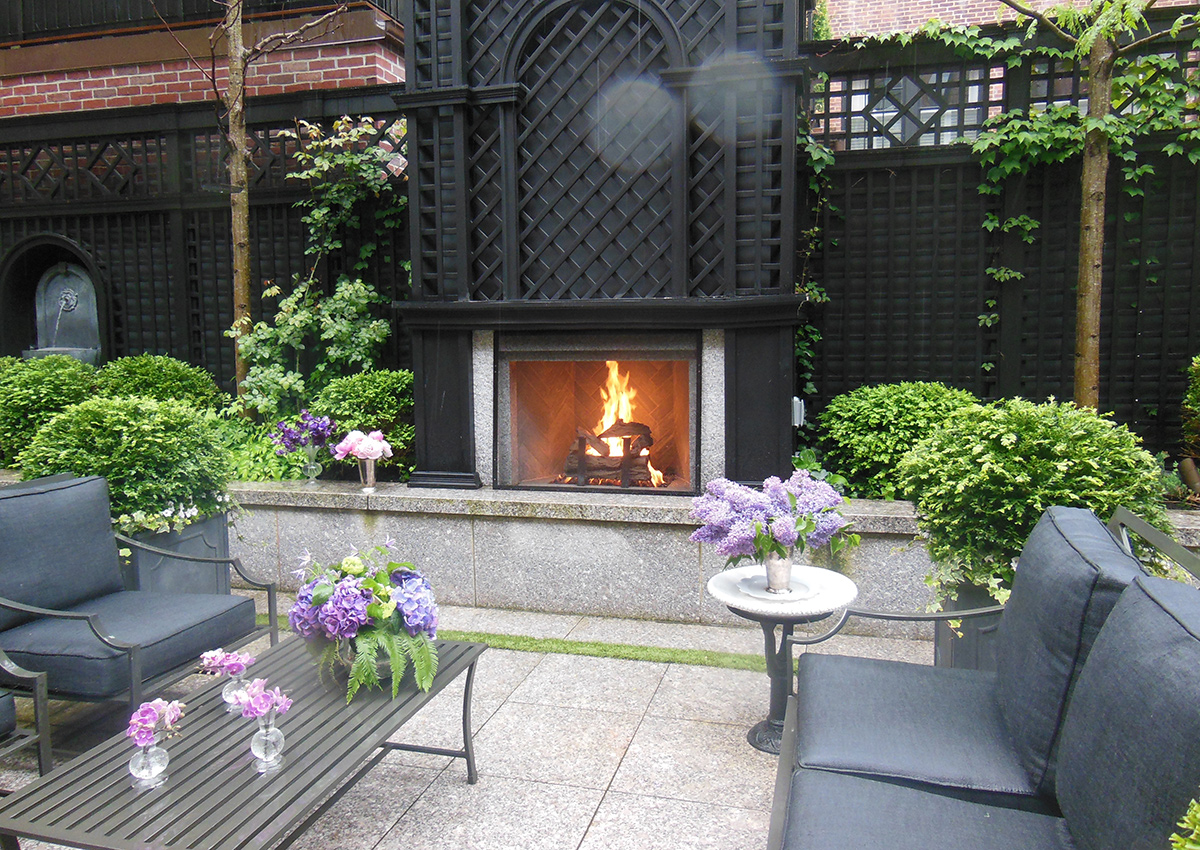 While formal in design, the gardens are, crucially, still very livable. All the gardens feature seating areas where you can escape the city and relax. While privacy is pretty nonexistent in these spaces, strategically placed trees and fencing adds to the sense of seclusion. And an electric outdoor fireplace really cranks up the coziness.
While formal in design, the gardens are, crucially, still very livable. All the gardens feature seating areas where you can escape the city and relax. While privacy is pretty nonexistent in these spaces, strategically placed trees and fencing adds to the sense of seclusion. And an electric outdoor fireplace really cranks up the coziness.
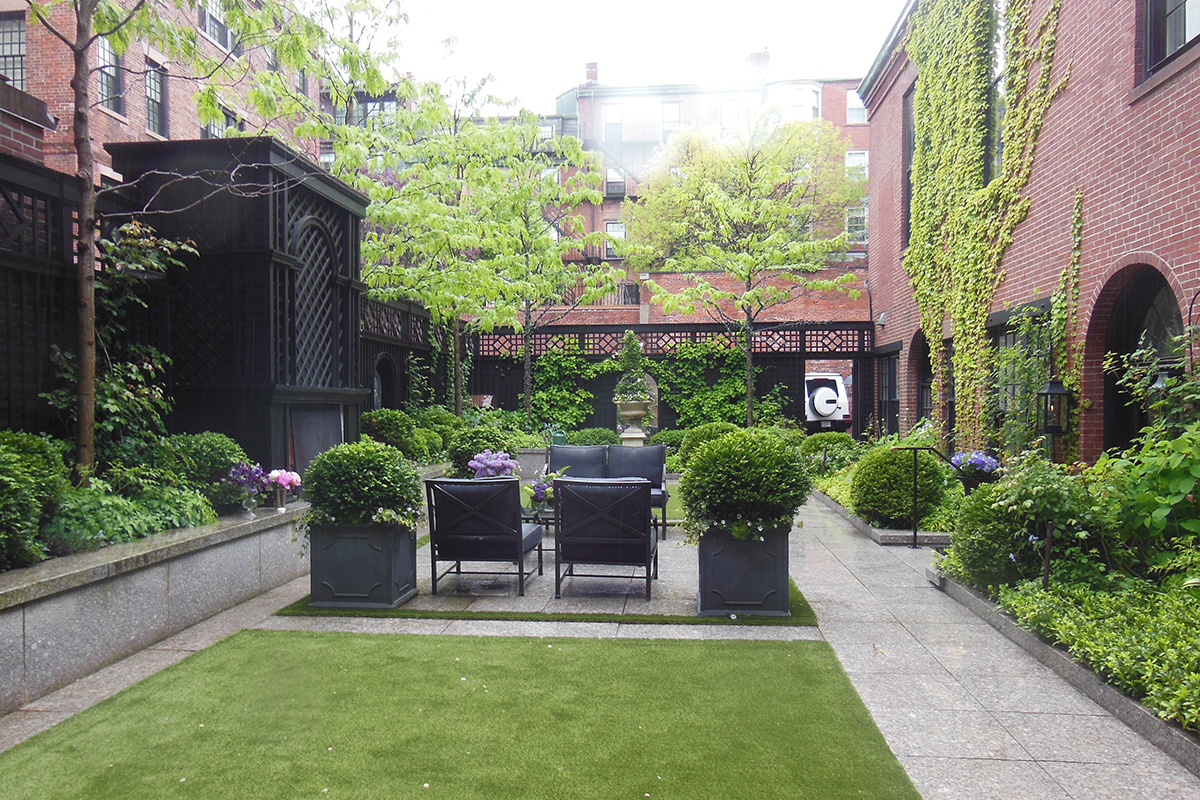 Another view of this garden’s seating area shows how much greenery is packed into these relatively small spaces, while still feeling very open and airy. It also demonstrates how even small trees can play a crucial role in providing a bit more privacy.
Another view of this garden’s seating area shows how much greenery is packed into these relatively small spaces, while still feeling very open and airy. It also demonstrates how even small trees can play a crucial role in providing a bit more privacy.
 Many had unique decorations on the wall of their gardens. This garden has lovely espaliered trees to create more walls.
Many had unique decorations on the wall of their gardens. This garden has lovely espaliered trees to create more walls.
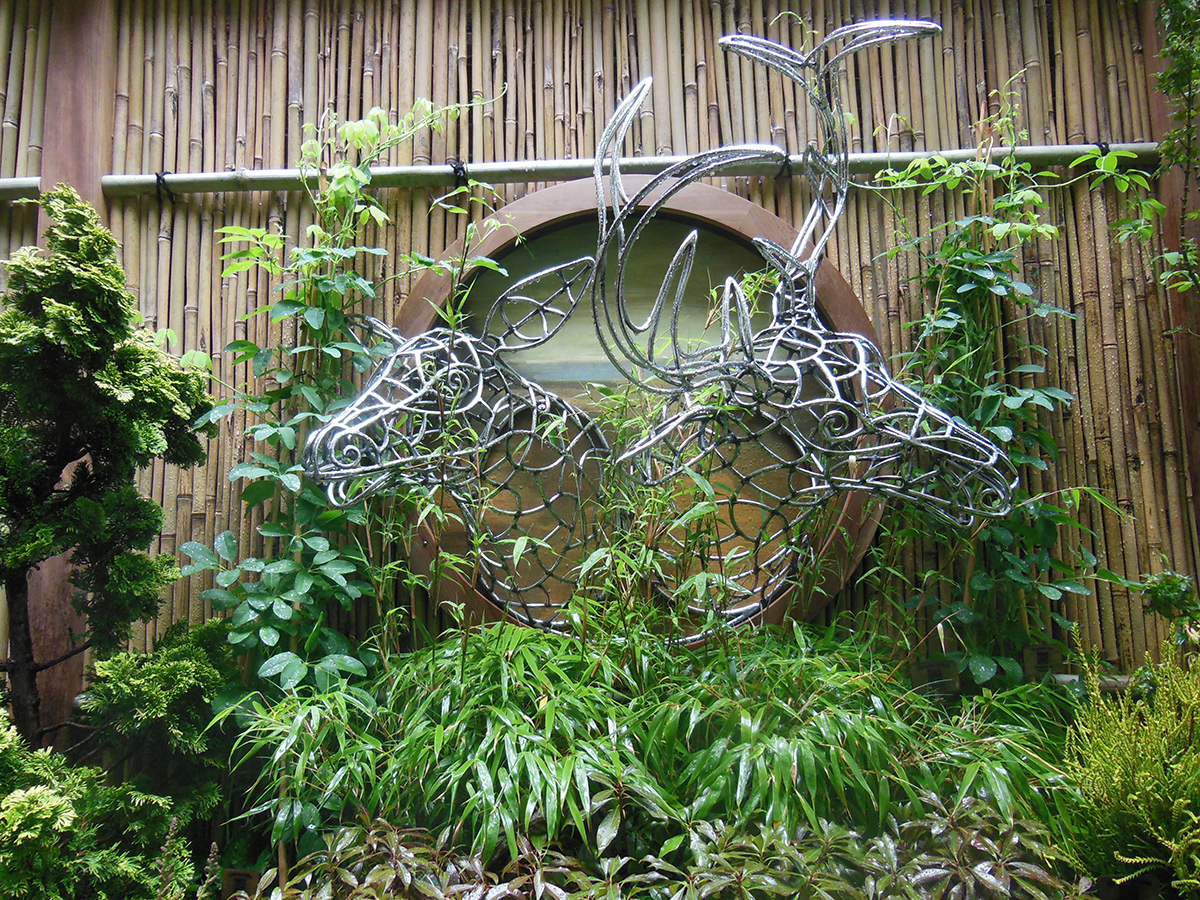 These incredible deer sculptures are an artistic approach to adding more natural flare to the space. I love how both of the heads look like they’re poking through this porthole window to munch on the plants below. And funny to think that one gardener’s fun fantasy can be another gardener’s worse nightmare!
These incredible deer sculptures are an artistic approach to adding more natural flare to the space. I love how both of the heads look like they’re poking through this porthole window to munch on the plants below. And funny to think that one gardener’s fun fantasy can be another gardener’s worse nightmare!
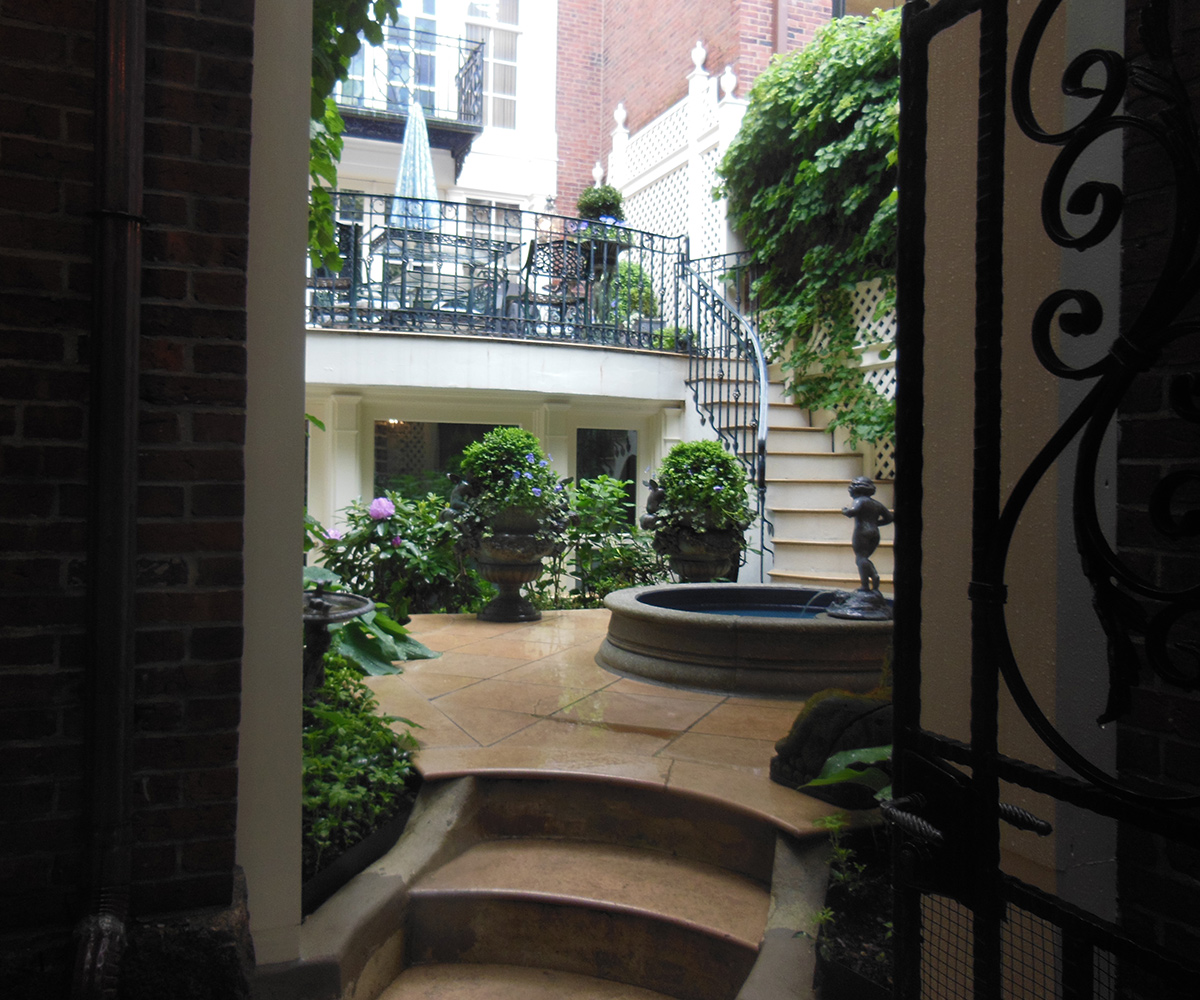 Another fountain as you enter this multi-tiered garden. This might be my favorite photo from this set. While the garden itself does look lavish and luxurious, I particularly like how Nancy captured it from the entryway.
Another fountain as you enter this multi-tiered garden. This might be my favorite photo from this set. While the garden itself does look lavish and luxurious, I particularly like how Nancy captured it from the entryway.
 Where beds can’t be dug or raised, containers are key. Long troughs are great for creating borders, and they can be made denser and more interesting by grouping small containers around. This stunning display is the most flower-filled we’ve seen so far!
Where beds can’t be dug or raised, containers are key. Long troughs are great for creating borders, and they can be made denser and more interesting by grouping small containers around. This stunning display is the most flower-filled we’ve seen so far!
As Nancy mentioned in the intro, this first batch of photos showcased different scenes from the incredible gardens featured on the tour. Tomorrow we will get a better sense of the Beacon Hill neighborhood with Nancy’s photos of container plantings that provide pops of color to entryways and windows, and add even more character to this historic neighborhood.
We want to see YOUR garden!
Have photos to share? We’d love to see your garden, a particular collection of plants you love, or a wonderful garden you had the chance to visit!
To submit, send 5–10 photos to [email protected] along with some information about the plants in the pictures and where you took the photos. We’d love to hear where you are located, how long you’ve been gardening, successes you are proud of, failures you learned from, hopes for the future, favorite plants, or funny stories from your garden.
Have a mobile phone? Tag your photos on Facebook, Instagram or Twitter with #FineGardening!
Do you receive the GPOD by email yet? Sign up here
Fine Gardening Recommended Products
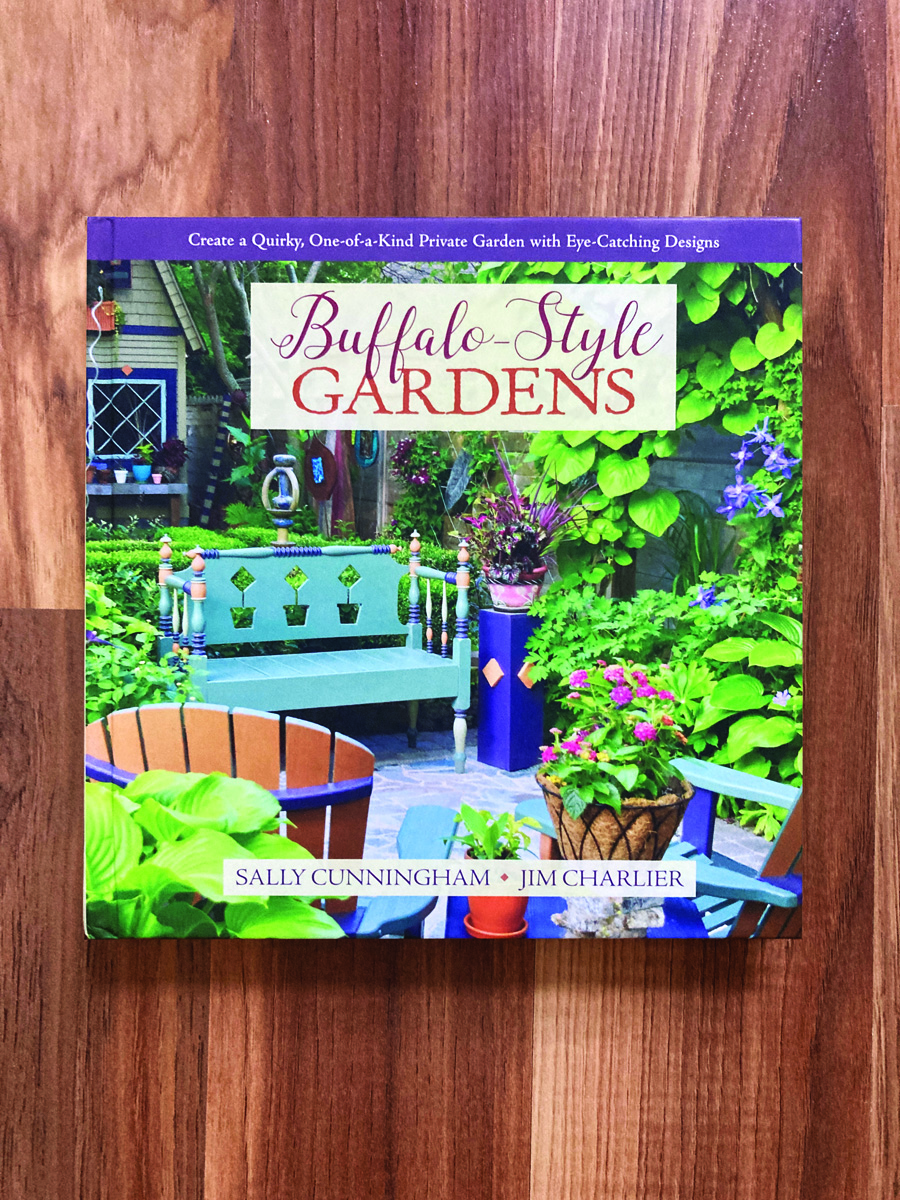
Buffalo-Style Gardens: Create a Quirky, One-of-a-Kind Private Garden with Eye-Catching Designs
Fine Gardening receives a commission for items purchased through links on this site, including Amazon Associates and other affiliate advertising programs.
Buffalo-Style Gardens is a one-of-a-kind, offbeat garden design book that showcases the wildly inventive gardens and gardeners of Buffalo – and offers readers “the best of the best” ideas to use in their own small-space gardens.

The New Organic Grower, 3rd Edition: A Master’s Manual of Tools and Techniques for the Home and Market Gardener, 30th Anniversary Edition
Fine Gardening receives a commission for items purchased through links on this site, including Amazon Associates and other affiliate advertising programs.
Since its original publication in 1989, The New Organic Grower has been one of the most important farming books available, with pioneer Eliot Coleman leading the charge in the organic movement in the United States. Now fully illustrated and updated, this 30th Anniversary Edition is a must-have for any agricultural library.

Lee Valley Mini Garden Shear Set
Fine Gardening receives a commission for items purchased through links on this site, including Amazon Associates and other affiliate advertising programs.
These shears have a distinctive finger rest that not only aids grip but allows greater freedom of movement than a conventional handle design. They have a durable powder-coat finish to resist rust and wear, and a simple clasp that locks the spring-action stainless-steel blades closed. The set includes one pair of round-nose shears measuring 5 1/2″ overall with 1″ blades for cutting stems up to 3/8″ in diameter, and one pair of 6 1/2″ needle-nose shears with 2″ fine-tip blades for precise work.

